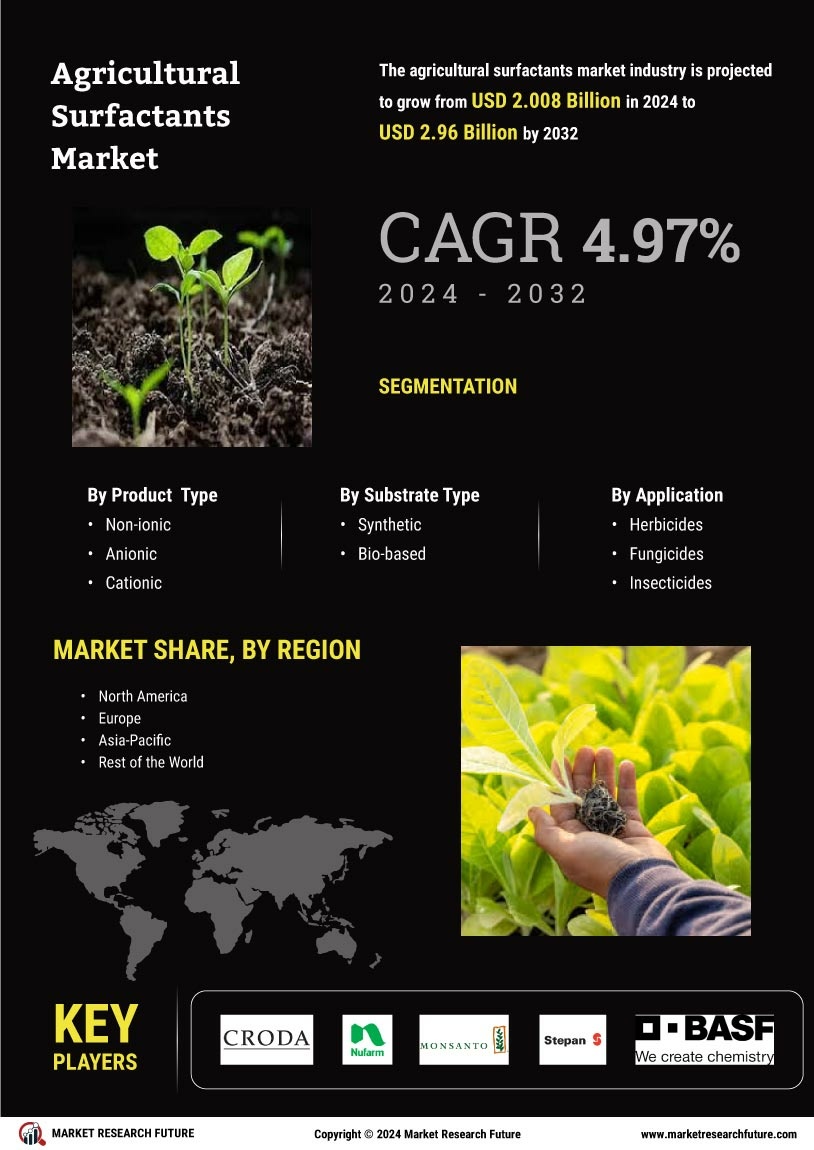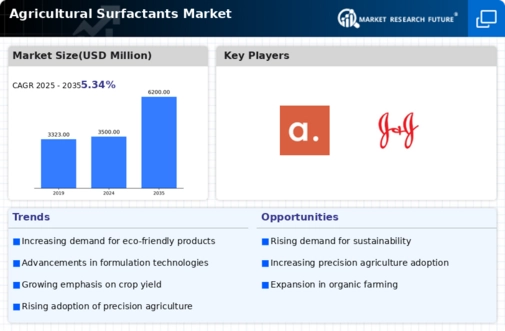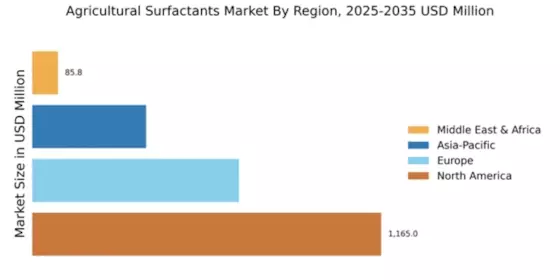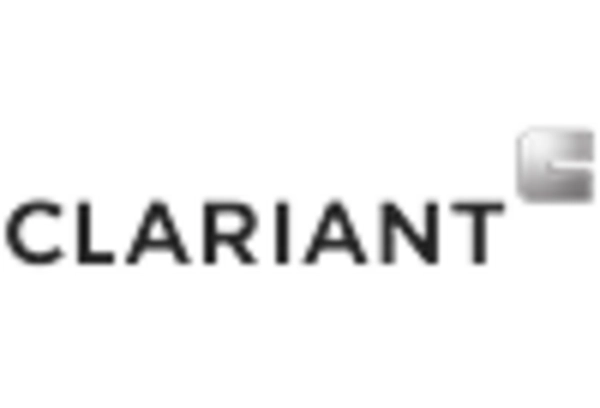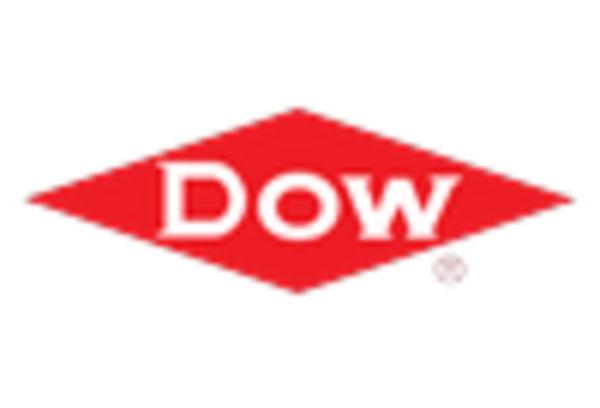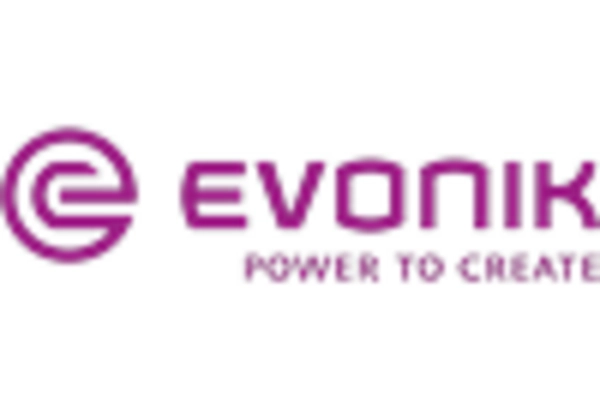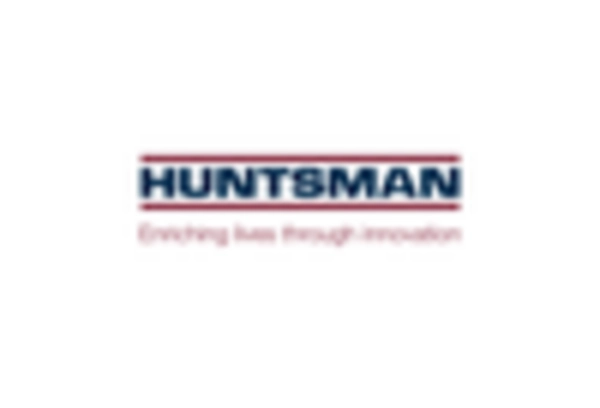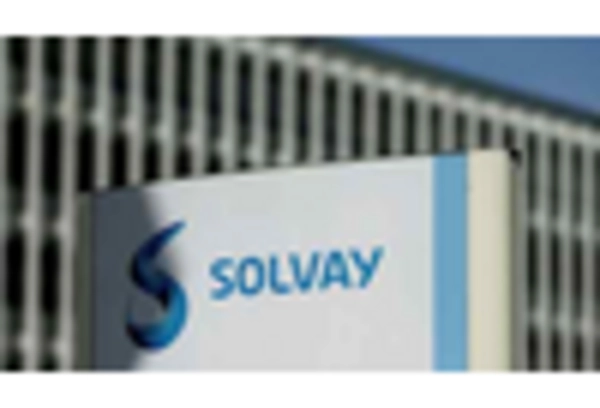Market Growth Projections
The Global Agricultural Surfactants Market Industry is poised for substantial growth, with projections indicating a market value of 6200 USD Million by 2035. This growth trajectory is supported by a compound annual growth rate of 5.34% from 2025 to 2035. The increasing adoption of surfactants in various agricultural applications, coupled with the rising demand for sustainable farming practices, contributes to this optimistic outlook. As the industry evolves, it is anticipated that new surfactant formulations will emerge, further driving market expansion and meeting the diverse needs of modern agriculture.
Expansion of Agrochemical Market
The expansion of the global agrochemical market is a key driver for the Global Agricultural Surfactants Market Industry. As the demand for fertilizers and pesticides increases, so does the need for surfactants that enhance their effectiveness. The agrochemical sector is projected to grow significantly, with surfactants playing a crucial role in improving the performance of these products. This growth is reflected in the market's expected value of 3500 USD Million in 2024. The synergy between agrochemicals and surfactants is likely to foster innovation, leading to the development of new formulations that cater to evolving agricultural needs.
Advancements in Agricultural Technology
Technological advancements in agriculture are significantly influencing the Global Agricultural Surfactants Market Industry. Innovations such as precision agriculture and biotechnology are leading to the development of more effective surfactants that enhance the performance of agrochemicals. These advancements allow for targeted application, reducing waste and improving environmental sustainability. As a result, the market is expected to grow, with projections indicating a value of 6200 USD Million by 2035. The integration of smart farming technologies with surfactants could potentially revolutionize crop management, making it more efficient and sustainable.
Rising Awareness of Environmental Impact
Growing awareness regarding the environmental impact of agricultural practices is shaping the Global Agricultural Surfactants Market Industry. Stakeholders are increasingly recognizing the role of surfactants in reducing chemical runoff and improving the efficiency of agrochemical applications. This awareness is driving demand for eco-friendly surfactants that align with sustainable farming practices. As consumers and regulatory bodies push for greener solutions, the market is likely to see a shift towards products that minimize ecological footprints. This trend may contribute to the projected growth of the market, reaching 6200 USD Million by 2035.
Regulatory Support for Sustainable Practices
The Global Agricultural Surfactants Market Industry benefits from increasing regulatory support aimed at promoting sustainable agricultural practices. Governments worldwide are implementing policies that encourage the use of environmentally friendly surfactants, which can enhance the effectiveness of agrochemicals while minimizing environmental impact. This regulatory landscape is likely to drive market growth, as manufacturers adapt to meet these standards. The anticipated compound annual growth rate of 5.34% from 2025 to 2035 suggests that the industry is poised for expansion, as stakeholders prioritize sustainability in agricultural practices.
Increasing Demand for Crop Protection Products
The Global Agricultural Surfactants Market Industry is experiencing a surge in demand for crop protection products, driven by the need for enhanced agricultural productivity. As farmers seek to maximize yields, the incorporation of surfactants in pesticides and herbicides becomes essential. These surfactants improve the efficacy of active ingredients, ensuring better coverage and penetration. For instance, the market is projected to reach 3500 USD Million in 2024, reflecting a growing recognition of the importance of surfactants in modern agriculture. This trend is likely to continue as the global population increases, necessitating more efficient farming practices.
